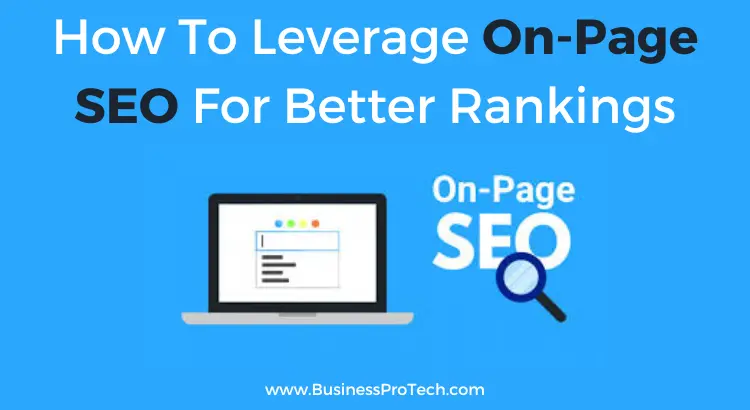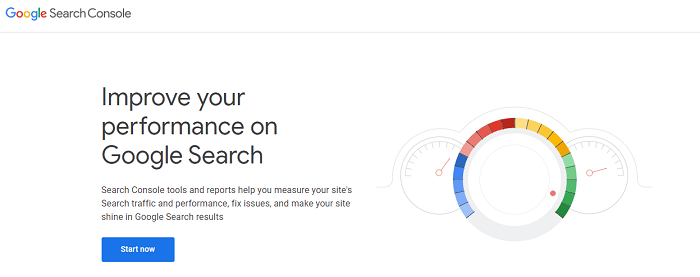On-page SEO is integral to any website’s search engine optimization strategy. It involves optimizing web pages’ content and HTML source code to improve a site’s visibility in organic search results.
This can be accomplished through various tactics, including keywords in page titles, URLs, and meta descriptions, incorporating internal links into pages, and other valuable tactics. Search engines use algorithms to determine which websites appear on the top of their search pages, considering many factors, including relevance, usability, authority, and trustworthiness.
On-page SEO helps ensure that a website meets these criteria by making it easier for crawlers to understand what a webpage is about and how relevant it is to specific queries. This article will provide an overview of how to leverage on-page SEO for better rankings.

Understanding On-Page SEO
On-page SEO has become essential to any successful digital marketing strategy since its introduction nearly two decades ago. While on-page optimization might initially sound complex, it’s relatively straightforward once you understand the basics and use reliable on-page SEO optimization tools.
Additionally, on-page optimization covers several technical aspects, such as meta tags, site structure, and loading speed, which can be important factors when ranking websites in search engines.

Content quality is especially critical in on-page optimization efforts because search engine algorithms use artificial intelligence (AI) technology to determine the relevance between online resources and user queries. When creating content for your website, consider topics likely to attract visitors while providing value by answering questions about your services or products.
Balancing these two objectives will create better chances of success with your on-page SEO efforts.
Keyword Research And Analysis
When conducting keyword research, marketing professionals should focus on user intent before considering other factors, such as competition levels.
By understanding user intent through researching what people are looking for when they type specific phrases into Google or other search engines, marketers can develop targeted keywords that relate directly to their intended audience’s needs.
Additionally, high-priority keywords should be identified by examining competitor websites and analyzing which words appear most often.
By considering both of these elements – understanding user intent and identifying high-priority keywords – marketers can ensure better chances of success regarding ranking higher in SERPs due to effective on-page SEO practices. Consequently, this will improve visibility among potential customers actively seeking out particular services or goods online.
On-Page Optimization
To maximize the potential of this type of SEO, it is vital to crafting engaging titles and meta descriptions that grab attention, use headings and subheadings effectively, include alt tags for images and other media, write high-quality content, create internal links between pages, optimize your website for mobile devices, and implement schema markup.
When crafting titles and meta descriptions, ensure they are keyword-rich and memorable enough to draw user clicks. Headings should be used as an outline throughout the document and follow a logical flow allowing readers to scan through them quickly.

Subheadings also help break up large chunks of text, which can often become overwhelming or intimidating if not appropriately divided. Images should always have ALT tags associated with them so that search engine bots can understand their context within the page better.
High-quality content will naturally attract more visitors due to its value; ensure that all articles are well-researched beforehand and contain unique insights into the topic.
Internal linking is another essential part of On-Page Optimization; strategically connecting relevant documents can improve the user experience while helping search engines determine what each webpage is about more accurately.
Additionally, optimizing your site for mobile devices has become increasingly important given the rise in mobile usage over the past few years; responsive web design is becoming increasingly common because it helps guarantee access across different device sizes without compromising performance or usability.
Lastly, implementing Schema Markup into existing HTML code will allow search engine crawlers to interpret data easier, thereby improving visibility even further.

Measuring On-Page SEO Success
After implementing on-page optimizations, measuring success is essential to ensure the changes have their intended impact. Quantifying this progress can help focus efforts on areas that require additional attention.
Google Analytics provides valuable data about how users interact with websites, including page views, time spent on each page, bounce rate, and more. This information will show which pages perform well and which require further updates or tweaks. Additionally, Google Search Console provides insights into organic traffic from search engines such as Google and Bing.

Tracking impressions, clicks, position, and other metrics related to keywords gives insight into whether the changed content is resonating with searchers’ queries. Competitor analysis is also helpful when gauging success after improving a website’s structure and content.
Examining what works for competitors can provide ideas for ongoing optimization strategies while helping identify potential weak points in one’s own site architecture and copywriting approach. By comparing elements across multiple sites, owners can better understand what content performs best for particular topics or keyword phrases within their industry.
Best Practices For On-Page SEO
The key to successful on-page SEO lies in following best practices, which include creating a user-friendly website, adhering to web standards and guidelines, avoiding common mistakes, and staying up-to-date with SEO trends and updates.
Creating a user-friendly website involves ensuring visitors quickly find what they are looking for without any distractions or excessive graphics. It includes having an organized navigation menu structure and clear labels for pages and posts. Using HTML tags such as H1s and meta descriptions lets crawlers easily index website content.
Following web standards and guidelines is essential when designing websites for better-ranking potential. It means ensuring all coding is valid according to W3C specifications and including ALT attributes where appropriate. Furthermore, strategies like keyword research before writing content can help improve visibility in the SERPs by targeting relevant queries made by users.

By implementing these best practices into your on-page SEO strategy, you will have taken the necessary steps toward achieving better rankings in search engines.
Ensuring that your website is optimized correctly from an onsite and offsite perspective will give you a greater chance of appearing at the top of SERP listings when people search for related terms or phrases associated with your business’s services or products.
Takeaway
Utilizing best practices for keyword research and analysis, on-page optimization, and measuring success will significantly improve website rankings. Understanding how each element works together and practicing implementing them properly while remaining up-to-date with the latest trends is critical.
With careful execution and maintenance, businesses can leverage on-page SEO to ensure their website appears at the top of search engine results pages. Doing so provides valuable visibility that leads to increased traffic, conversions, and revenue.